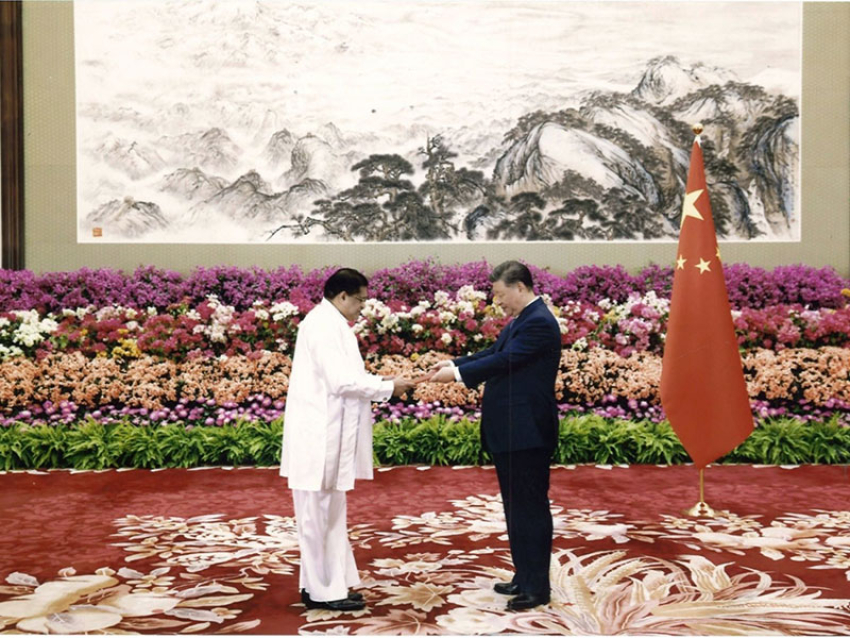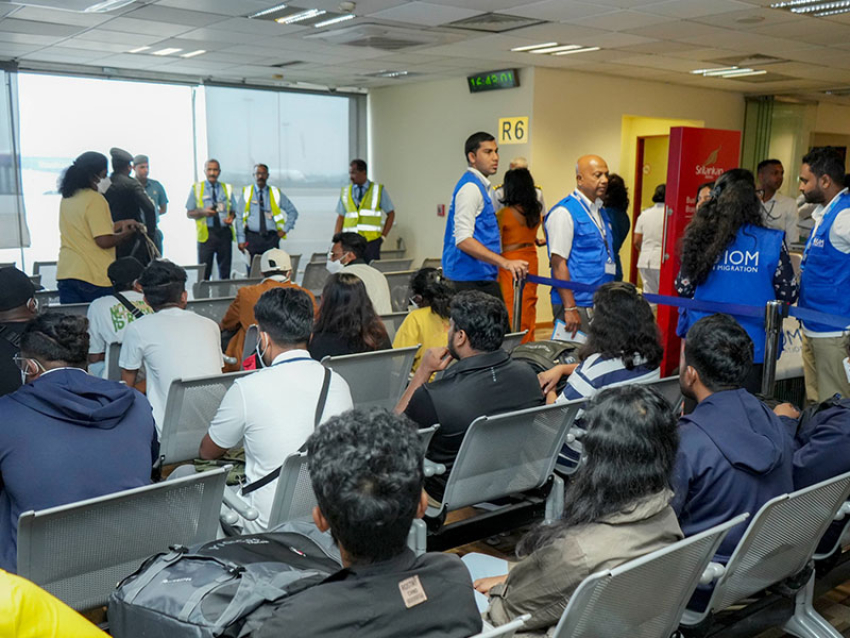The notion of island life is always perceived as exceptional or superior, to the world. Being islanders, however much we adopt western culture and its norms, island life has its own perception of time and space which cannot be rationalised by western thinking.The chaotic, highly indisciplined and irrational city life which is part and parcel of our everyday life can be rationalised as an outcome of island mentality, a misfit attempt of western law and order.
Robert Knox, Pablo Neruda and many others have lived here just to understand and explore the nature of the islanders, and it’s no wonder that more foreigners are coming here just to study this misfit nature of the islanders, trapped in a so-called ‘global village’.
Andrea Perini and Marta Bertani from Italy are a duo who came down on vacation to Sri Lanka to experience the amazing bio-diversity landscapes and the spontaneous island life of Sri Lankans. Marta Bertani is a licenced architect in Italy while Andrea is an Art and Culture event curator by profession. They initiate and propose city re-imagining projects through their association ‘Third Eye’ and Anguriera di Chiaravalle and Terzo Paesaggio are such successful projects in Italy.
Finding their serenity in a corner of a crowded boho-style bar in Ella, the duo initiated a fruitful conversation. “It’s amazing to notice the chaotic, highly in-disciplined, polluted and irrational city life on the one hand and on the other, the slow, green, serene nature and lifestyle of the villager. However, both lifestyles are changing within a few kilometres,” Andrea said.
As they explained, the lifestyle of one nation would surely be different and unique to another according to the socio-political and economic conditions of the country, and Andrea stressed the importance of having a collective vision to imagine the city we want to live in. “The main area we study is how human beings interact with the city and the environment in which they live. Despite where you live, it’s important to create the atmosphere of the city according to its residents’ needs,” said Marta.
Any city is governed by a system of institutions. Infrastructure and other services related to any town, village and other services are administered through the Urban Council, Pradeshiya Sabha and Grama Niladhari institutions. It is interesting to find out how much these institutions are aware about the needs of the people who live in a particular city. “However, through re-imagining-cities, we are redefining the city we live in to suit our needs. For example, someone who is thinking of vacationing should think of getting away from the usual atmosphere. Why? Because city life doesn’t give us a relaxing atmosphere and is not designed to help you relax. Therefore, whenever we wish to have a vacation we plan a getaway which would give peace of mind. However, isn’t this an illusion? Depressing? Because,after a few days you still have to return to the chaotic atmosphere which you never thought about changing into livable condition. So our study is mainly on understanding and identifying the lifestyles of the diverse communities and suggest to the relevant city development authorities what needs to be done to create a livable environment,” Andrea explained.
Andrea and Marta both stressed that the need for relevant changes of a particular neighborhood should come from within the community who live there. People should be aware of the changes they need to improve their cities and neighborhood into livable conditions.
Yet all too often, strategies for urban regeneration seem to focus on improving the image of a place, instead of the lives of its residents. Participatory art – where artists collaborate with local communities, leaders, institutions and business owners – is often more about helping people to accept their daily conditions, rather than to change them.
‘Made in Corvetto’ is such an attempt initiated in Milan and Andrea and Marta shared their knowledge to make it a success. The project was initiated in the municipal, transforming fragile urban areas into new meeting places, and cultural and social development to promote new economic activities. The place has been converted as a Community Points or aggregation centre to enhance the offer of socio-cultural opportunities to the inhabitants of the neighbourhood and also to knot the threads with the entire city by redeveloping spaces.
“With these purposes ‘Made in Corvetto’ was born. The project implemented the ‘hybrid market’ model, with the production, transformation, sale, administration of food and drinks on the one hand, and cultural activities and other services contributing to improve the commercial attractiveness of the neighborhood, on the other, and also the cohesive social life of the people who live in the area. The project was quite successful and brought new life to the entire neighborhood. The secret of its success was that the need of the project came from within its community. Therefore, people felt it was part of their life. Hence, according to my experience re-imagining city projects should come from within the people who live in the area, not from outside,” Andrea said.
While Europe is leading the way in systematization and introduction, they are often the slaves of the same systems which Marta believes is a constraint for personal development and thinking. “Europeans do not believe in being spontaneous. They always obey the system as it was implemented which I think is a constraint for new ideas or thinking. Let me explain this with a basic example. In Europe, public transport buses only stop at bus halts, they never stop spontaneously anywhere possible. However, this rigidity makes the life of Europeans very methodical yet stressful as it doesn’t give space for human errors. However, here in Sri Lanka life is quite the opposite. Everything is so spontaneous, there’s no system at all. It has its own socio-political and economic consequences. However, to find a balance between these two extreme versions is important for a human-friendly life,” said Marta.
Andrea and Marta both highlighted the fact that the concept of re-imagining cities could do so much more to empower communities. They mentioned the importance of the role that participatory art can play in this context. “From experimental performances to collaborative model-making, urban expeditions to co-produced audio walks, treasure hunts to city archiving, participatory art can help people articulate their experiences of the city on their own terms. This has the power to question and challenge any given order, which directs how people think about cities, and live in them,” Andrea said.
Administrators of urban space would like to have the public believe that the urban environment has a predetermined function: a bench is for sitting, not sleeping on; a train station is for people on the move, not for people seeking shelter; a park is for families with children, not for groups of young people – and so on.
In conclusion, Marta added that, “In the present political climate, democracy is seemingly becoming less sensitive to the demands of citizens calling for the just distribution of resources, a cleaner environment or the defence of common goods. This is common everywhere, irrespective of whether it is the West or the East. However, the re-imagining cities concept has the potential to give city dwellers a sense of urgency, empowerment and entitlement, by promising that everyone is capable of imagining how things could be different. And that’s the first step towards forging a better future.”




















